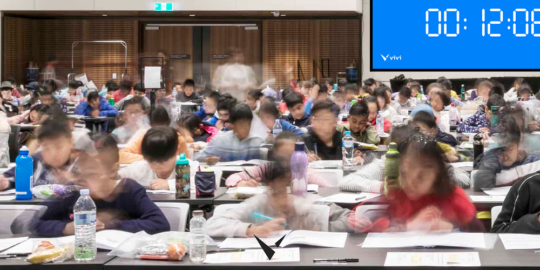From its inception, Vivi was created to solve educator’s problems. The initial concept came to Vivi founder Dr. Lior Rauchberger when he was asked to recommend a wireless presentation system to a university.
“They explained what their pain points were and that they wanted their teaching staff to be more mobile and more engaged with the students,” he recalls. “I looked at several options and was deeply underwhelmed.”
This gave Rauchberger the kernel of an idea. He visited two dozen schools across Australia and spoke with teachers and IT managers. It turned out that the university’s pain points were universal. That kernel of an idea soon grew into what we now know as Vivi – a wireless presentation solution specifically designed for education.
Vivi’s first incarnation was built to a large extent around ideas put forward by those teachers and IT managers. That pattern has continued and is now formalized in a five-stage process for developing new features for its classroom technology.
Stage 1: Proactively seeking feedback from schools
Vivi takes a very structured approach to gathering “360-degree feedback”, says Rauchberger. “We encourage users to email us, they can submit ideas via our website, and there’s a feedback button within the app itself. Our support analysts are speaking to schools every day too, and we have an internal system for capturing all of their feedback. And we’ve got our own views, which go into the mix.”
Stage 2: Shortlisting and selecting new features
When a critical mass of compelling ideas has been gathered, they’re assessed internally, and potential new features are shortlisted. A survey is then sent out to Vivi-enabled schools asking them how important each feature would be to them, on a scale of one to five. The aim here is to ensure that only new features that add value across the user base will proceed to development – only the features with the highest overall ratings proceed to the next stage. The clear winner from Vivi’s most recent survey was a digital signage overlay that enables schools to schedule images and video to be displayed at specific times and locations – for example, morning announcements or a reminder about a special event. “I was genuinely surprised when Digital Signage was number one on the request list,” says Rauchberger. The signage feature was finalized and is to be released in the January 2018 software update.
Stage 3: Consulting with educators
The next step is to work out how the chosen features should function within the app, and within the classroom. An initial proposal is worked up internally at Vivi, before being presented to partner schools for discussion. Rauchberger cites the Multi-Screen Display feature launched with the August 2017 software update as a recent beneficiary of this kind of consultation. To ensure that the team was taking the right approach to the feature, Vivi ran a lunchtime workshop with a group of teachers and IT staff at Melbourne High School. “We took them through what we were planning to build and asked what they thought,” says Rauchberger. “We’d made some assumptions about usability and functionality. They weren’t necessarily wrong, but that educator feedback absolutely helped mold the feature into a better solution for the classroom.”
Stage 4: Testing in live school environments
Melbourne High was one of the very first schools to adopt Vivi, and they’re now one of three schools that open up their systems and classrooms so that new features can be tested in a live environment before they’re released. “We run the software through rigorous internal testing, of course, but it’s not until we do the field testing that we’re confident to release the product,” explains Vivi Technical Engineer Simon Probert.
“What they do is a tough gig,” says Melbourne High’s ICT Manager, David Ball. “It’s hard to replicate a school network in an office, and you’ve got a device that has to work with Windows, with Mac, with iPads, with Android, and then the challenges of all the different AV devices. And of course, schools being schools, they break the standards!” The result, for Vivi and its users, is a regular stream of valuable and very reliable new features.
“What we absolutely cannot have is a teacher standing up in front of a class trying to teach something, and the product doesn’t work,” says Probert. “Field testing has revealed many things to us, allowing us to fix problems before they become real problems.”
Stage 5: Software update
Once the new version of the software passes internal and field testing, it’s cleared for release. Then all the schools have to do to start using the new features is run the software update from Vivi’s Central Admin Portal.
And repeat…
This process never ends. The needs of schools will keep changing, the opportunities afforded by technology will keep changing, and Vivi will continue to adapt. For Rauchberger, it’s a challenge to be relished.
“Technology’s improving, becoming more accessible and more adaptable all the time. And we retain our laser focus on education,” he says. “I’m excited to see what our solution might look like in two or three years’ time.”
And for schools? Thanks to Vivi’s cloud-based technology, they’re future-proofed. Vivi will keep delivering the new features they need, and deploying them is as simple as pressing a button.



